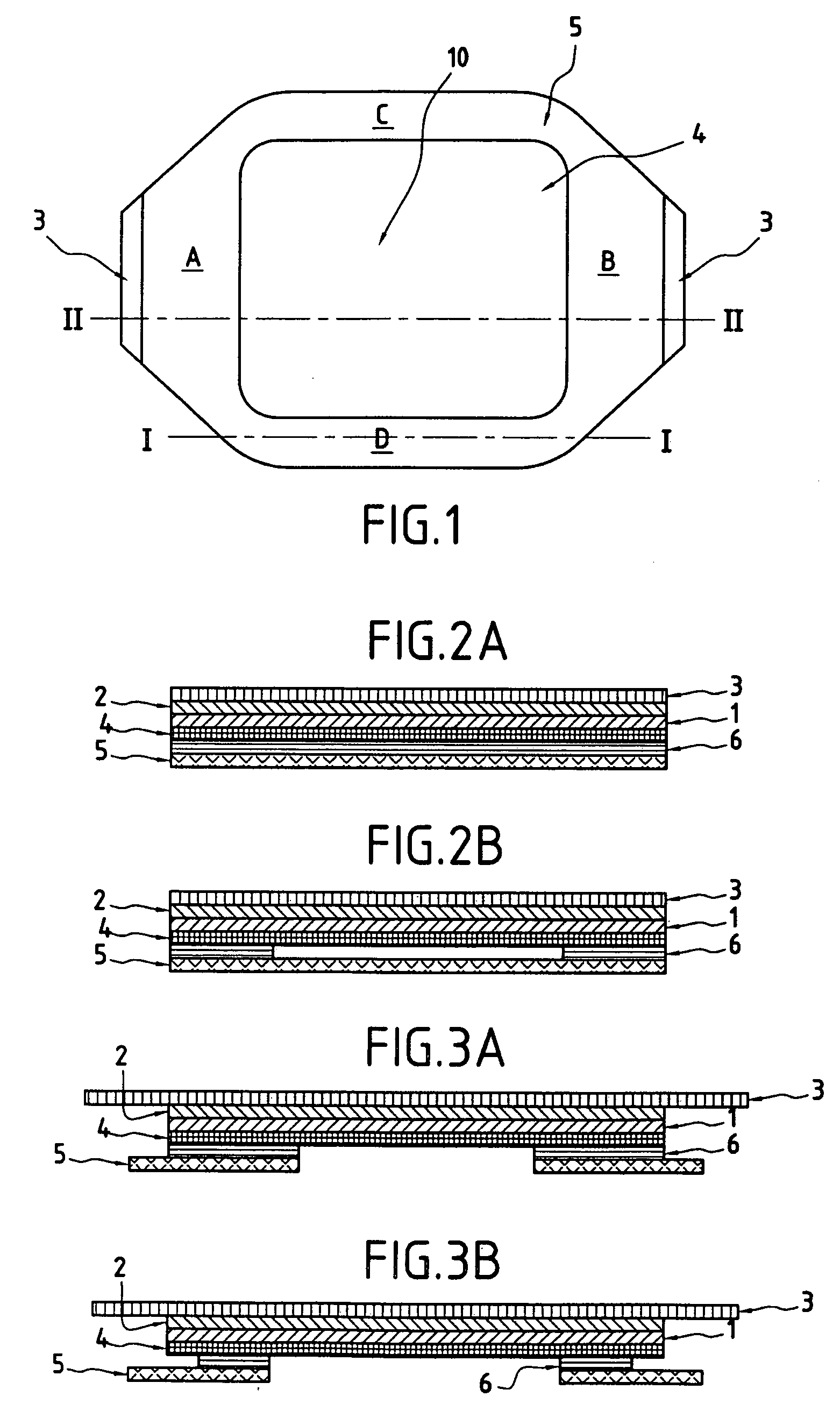Dressing Provided With a Thin Film Applicator
a technology of thin film and applicator, which is applied in the field of dressings, can solve the problems of premature failure of adhesion of the dressing, disturbance of the adhesive connection between the skin and the dressing, and the difference in rigidity between the thin film and the dressing,
- Summary
- Abstract
- Description
- Claims
- Application Information
AI Technical Summary
Benefits of technology
Problems solved by technology
Method used
Image
Examples
example 1
[0093]The GSM of the paper used to prepare the frame 5 was 120 g / m2; the width thereof was 20 mm. The thickness of the bonding layer 4 formed from polyethylene was 50 μm. The dressing was rectangular in shape (as shown in FIG. 1).
example 2
[0094]The GSM of the paper used to prepare the frame 5 was 120 g / m2; the width thereof was 20 mm. The thickness of the bonding layer 4 formed from polyethylene was 30 μm. The dressing was rectangular in shape (as shown in FIG. 1).
example 3
[0095]The GSM of the paper used to prepare the frame 5 was 80 g / m2; the width thereof was 20 mm. The thickness of the bonding layer 4 formed from polyethylene was 50 Mm. The dressing was rectangular in shape (as shown in FIG. 1).
PUM
 Login to View More
Login to View More Abstract
Description
Claims
Application Information
 Login to View More
Login to View More - R&D
- Intellectual Property
- Life Sciences
- Materials
- Tech Scout
- Unparalleled Data Quality
- Higher Quality Content
- 60% Fewer Hallucinations
Browse by: Latest US Patents, China's latest patents, Technical Efficacy Thesaurus, Application Domain, Technology Topic, Popular Technical Reports.
© 2025 PatSnap. All rights reserved.Legal|Privacy policy|Modern Slavery Act Transparency Statement|Sitemap|About US| Contact US: help@patsnap.com



